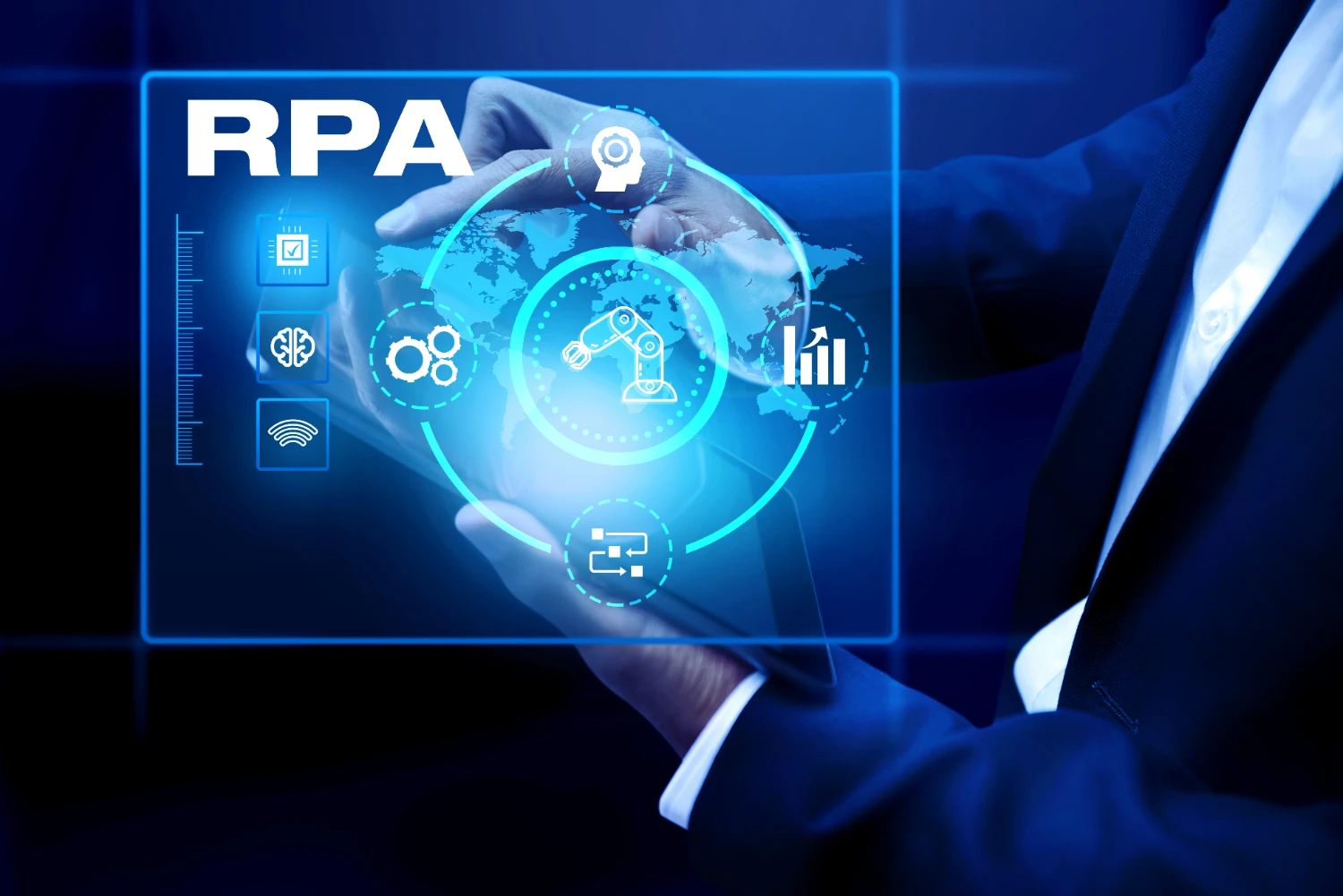Table of Contents
Adaptive AI and Generative AI are probably the most innovative fields within the ever-changing field of artificial intelligence that attract scientists and practitioners. Each of these domains provides unique methods for resolving difficult issues and expanding machine intelligence capabilities. They represent one of the most important developments in AI technology.
Adaptive AI reflects an idea of machines in the sense that they learn experiences and change their behavior over time like human beings. It includes such methods as neural networks, though more important as reinforcement learning, in which systems learn continuously by refining their decision-making processes according to feedback from the environment. Contrarily, generative AI creates entirely new content, including literature, images, music, and much more. It uses advanced algorithms like Variational Autoencoders and Generative Adversarial Networks to generate new, original outputs that mimic patterns in the training data
Rise of AI
AI is being used in multiple disciplines and until now, we have all seen a lot of things related to AI, Adaptive AI and more. Artificial Intelligence was in existence for a long time starting from 1951. However, things took a massive turn at the beginning of this decade and suddenly AI became a household name and a product that we can see in our everyday lives. What started from a basic level tool is now even capable of holding conversations like humans and whatnot. Adaptive AI can be found being implemented across several industries on a global scale. Moreover, Developers are coming up with new ways to deploy tools combined with AI to make things more convenient for the masses. Let’s have a look at the stats and predictions based on the use of Artificial Intelligence in different fields.
Some Key Statistics:
- The global market size of AI was capped at $136.55 billion in the year 2022. According to artificial intelligence statistics from a report published by Grand View Research, the size will reach $1.811.8 billion by the end of 2030.
- The global AI chip market size is all set to clock the cap of $83.25 billion by 2027. Apart from that, expectations are that the CAGR of the same will grow at a rate of 35% during 2019 to 2027.
- The AI robot market in the medical industry is anticipated to grow at 17.4% CAGR between the period of 2022 to 2032. The market share of the same could reach a value of $40 billion by 2032.
The debate between Generative AI vs adaptive AI regarding future prospects circles around their decision-making and data processing capabilities. In the future, we will get to see more technological advancements that will ensure that both of them grow harmoniously.
Different types of AI systems
Artificial General Intelligence
AGI or Artificial General Intelligence has the ability to create machines that can perform multifunctional tasks and act as real-life assistants for humans. It can use previous skills and complete new tasks without any human intervention.
All in all the AGI is supposed to perform at the same intellect level as a human being can. Multiple tasks like robotics, image recognition, and Natural Language Processing (NLP) can be performed with the help of General AI. In addition, it can also aid in automating complex tasks that could take longer time with human intervention.
Artificial Superintelligence
Artificial Superintelligence or Super AI will be the one that could surpass humans in performing different tasks. The concept of Artificial Intelligence is hypothetical as of now. In simple terms, we can say that the Super AI could be dubbed the most advanced AI system.
It can contribute to different tasks like decision-making, thinking, problem-solving, and more. Furthermore, it also showcases an ability to understand different human experiences and emotions.
Narrow AI
Narrow AI or Artificial Intelligence is the one that focuses on one particular area instead of accomplishing multiple tasks. Also known as Weak AI, it is constructed to perform a set of tasks along with the capability to learn from the same.
One can use this AI for the automation of day-to-day activities, maximize efficiency, cut down costs, and even help in decision-making. Weak is being used in multiple industries as of now, like robotics, healthcare, finance, and a lot more. You can see many examples of the same including IBM’s Watson, the Self-driving cars by Tesla, facial recognition software, etc.
Reactive Machine AI
This is one of the old-school AI models that come with limited capability. They don’t have a memory of their own. Reactive machines can be utilized for automatically responding to a series of combinations and inputs from a singular domain.
To understand with an example, IBM’s Deep Blue is the perfect Reactive Machine AI model. It holds the record of beating Garry Kasparov in 1997. The same played chess matches based on real-time intuitions and worked really well following the mentioned principle.
Limited Memory AI
Limited Memory AI model has the capabilities of Reactive Machine AI plus the ability to learn from past experiences and use the stored data to make new decisions. In the current scenario, all the AI systems like self-driving cars, chatbots, and virtual assistants like Siri and Alexa, all belong to this Limited Memory AI domain.
As for its working, the AI stores a large amount of data to take reference from in order to solve all the possible problems. For example, an image recognition system based on Limited Memory AI will train on a plethora of images to produce results related to the same.
Theory of Mind AI
Theory of Mind AI is only on paper (or we can say in the experimental stage). As of now, there is a long wait before we get to see it in action. These machines will play a crucial role in psychology as they will work on emotional intelligence.
This AI will understand human emotions and feelings in the best possible way a machine can along with not losing the focus from the environment monitoring. We saw an example of the same with the unveiling of Sophia, a humanoid robot that can produce facial expressions and behavior identical to humans.
Self-aware AI
Self-aware AI is the most advanced stage of AI until now. This stage will be achieved when the machines will be able to develop self-aware abilities similar to human consciousness. And the most intriguing part is that they will have the same emotional needs, and desires, like a human.
The development of self-aware AI modes is not going to happen anytime soon because it is the last stage in the development of AI models. We can expect to see anything like that in action after a few decades most probably.
What is Adaptive AI?
Adaptive AI, as the name suggests, is capable of learning, adapting, and improving with the changes experienced by it via environment and data. This AI model follows algorithms and rules and modifies its behavior based on the same.
It can make changes to its codes based on the inputs from an individual so that the level of adaptability increases to its maximum potential. The main characteristics of Adaptive AI are the ability to learn, self-improvement, problem-solving prowess, adaptability, and more. You can get to see multiple Adaptive AI use cases in different fields like robotics, healthcare, finance, and more.
What is Generative AI?
Generative AI or GenAI is an artificial intelligence model that can create different types of content like images, audio, text, and even synthetic data. The current Generative AI models offer a simple interface that can produce high-quality content with detailed prompts.
However, the history of the same dates back to the 1960s with the introduction of chatbots. But that was something very basic and bland at the same time. Now, things changed in 2014 when the generative adversarial networks came into play which is a machine learning algorithm with the ability to create authentic content in different formats.
Key Differences between Generative AI and Adaptive AI
There are a wide range of differences between Generative AI and Adaptive AI. However, the selection of the model for your business completely depends on the particular requirements.
There are several distinctions between the above-mentioned AI approaches.
- Adaptive AI evolves via optimization of processes related to real-time information and feedback, while Generative AI concentrates on developing new content through learning based on existing information. Understanding some of the primary differences is essential to leverage the best of both worlds.
- Choosing between Generative AI and Adaptive AI may also depend on elements like the level of creativity and scalability required. Generative models prosper in domains that require content generation, whereas Adaptive AI shines in frameworks that run through data-driven insights.
A detailed analysis of Generative AI vs. Adaptive AI can help determine how personalized solutions can be designed using data trends and patient needs.
Base:
Generative AI is developed to produce different types of content like images, music, text, and more. And it does the same with the help of an existing database that it learns from. For example, most of the Generative AI models train on millions of datasets so that they can produce something that is in synchronisation with the user’s prompt.
On the other hand, Adaptive AI is based on learning from real-time interactions and experiences that further modify the performance of the model. Adaptive AI use cases include making adjustments to its codes based on the requirements of the user for better decision-making.
Learning Curve:
Generative AI uses multiple datasets of large volumes to train the models and then generate output using the same. The generative AI engineers understands and breaks down complex patterns and then producing large amounts of content based on the same.
When it comes to Adaptive AI, it gets all the learnings and modifications from the real-time data and the feedback from the users. And the same improves the results based on experience and real-time conditions. The learning curve stands as a key difference between Generative AI and Adaptive AI.
Output production:
The output produced by Generative AI models is inclined towards the creative side as we have seen in the case of Leonardo AI, ChatGPT, and others. Most of the Gen AI models tend to produce music, writing, art, and other related content. The most primal task and challenge for the same is to offer originality.
On the other hand, Adaptive AI creates output based on optimization of processes and indulging in data-driven decisions. Some of the use cases of Adaptive AI can be seen in applications or software that rely on prediction, and recommendations, based on the analysis and real-time information. The generative AI vs. Adaptive AI debate takes a considerable turn here because we can clearly see the difference in the direction of the output.
Setup complexity:
Generative AI models can be a tough task to develop and deploy. The main reason behind that is the large datasets they train on. For example, if you are creating a Gen AI model that creates images based on a prompt then you need to train the same on millions of images and uncountable datasets. With this, you can achieve optimum results when a user drops a prompt.
Coming to Adaptive AI, it is easier to deploy as compared to Generative AI because it thrives on real-time data and is developed to be highly efficient. The main focus of adaptive AI is on adaptation instead of content generation which stands out as a noteworthy difference between Generative AI and Adaptive AI.
Common Applications:
Generative AI is primarily used for content creation, including music, writing, images, and more. Tools like Pika, Midjourney, and music composition generators are already bringing this technology into daily use. Such tools leverage the capabilities of Generative AI to develop creative outputs rapidly and effectively, turning them valuable for domains like marketing, design, and entertainment. With persistent advancements, the scope of Generative AI continues to expand, providing more customized and groundbreaking solutions for content developers.
As for Adaptive AI use cases, it can be seen making contributions in dynamic environments like self-driving vehicles, predictive maintenance systems, and personalized recommendations. And it happens because Adaptive AI can learn from the actions of the users and adapt that same thing in no time.
Understanding the key differences related to the functionality of the two AI models is critical. Generative AI’s ability to create entirely unique content and Adaptive AI’s focus on learning from previous actions and adoption tendencies in real-time, make them both suited for various applications. This stands as a major point when talking about anything related to Generative AI vs. Adaptive AI.
Challenges and limitations
There happen to be a wide range of use cases for Generative AI and Adaptive AI. But nobody can deny that both models also come with their own limitations. Let’s take a look into the top three limitations of both Generative and Adaptive AI.
Generative AI challenges
- Ethical Concerns: Yes, Generative AI could sometimes produce content that is ethically incorrect with deep fakes and other tech in the background. And this type of content increases the spread of fake information which further reduces the credibility of technology as well.
- Data Biases: It has been witnessed in multiple Gen AI models that they can produce data-biased inputs based on the datasets they have trained on. The outputs could be entirely wrong or outdated in most of the cases of user prompt being new.
- Intellectual Property issues: Generative AI trains on different datasets of existing works. This raises concerns when it comes to creating content because copyright and ownership come into play.
Adaptive AI challenges
- Implementation: One of the biggest Adaptive AI challenges is the implementation of Adaptive AI use cases. To deploy the same, one needs specialization in integration and maintenance of the workflow leading to optimum model output.
- Feedback cycle: The dependency on users’ feedback for Adaptive AI can result in errors or even biases. And this could create a bottleneck situation for AI models and halt their learning curves as well.
- Scalability: Adaptive AI use cases clearly suggest that this model evolves with time. Now, to do the same, it keeps storing large amounts of data. In the whole journey, Adaptive AI needs constant monitoring and development to remain effective.
Future of Generative AI and Adaptive AI
The future of Generative AI and Adaptive AI looks bright, with the way it is moving forward. In the future, we may see Generative AI-equipped robots with basic problem-solving and task completion skills. Also, interactive AI models that can chat and perform tasks like opening software or executing other actions in the digital ecosystem.
Talking about Adaptive AI, its use cases will keep increasing the modifications in the same. We can get to Adaptive AI handling highly complex tasks in the future for different professional disciplines. Not to forget the developers of the same will focus on providing it with better decision-making and risk managing capabilities. One thing that we can say right now about the future of Generative AI and Adaptive AI, is that both of them will make business operations for humans seamless.
Conclusion
We know now that the debate goes a long way back from the first-ever implementation of the two types of AI.
While we can say that Generative AI is a go-to mode for creators, Adaptive AI is primarily for multiple disciplines. Choosing the best one completely depends on the demand of your business.
For instance, if you want to create a platform where creators can show off their imaginary prowess then Generative AI is for you. However, if you are building software that is based on user behavior then Adaptive AI could fit the bill.
FAQ
What are the limitations of Generative AI?
There are multiple limitations of Generative AI in the real world. Here are a few of them:
- Content produced by Generative AI imposes a threat of copyright violation for the users.
- It can also produce biased output based on the datasets it has been trained on. It could lead to the generation of false narratives or misinformation.
The same can be avoided if you are working with a Generative AI development company that relies on neutral datasets.
What are the limitations of Adaptive AI?
- Sub-Standard Datasets: Adaptive AI is dependent on the data gathered by user interaction. Now, that data can be poor in quality as well which will affect the efficiency of the AI model.
- Security Concerns: It also poses a threat to privacy because user interaction means collecting user data. Make sure that you hire a trustworthy Adaptive AI development company that respects the privacy of the users.
What are some Adaptive AI use cases?
When it comes to AI solutions, we can see its prominent presence in multiple disciplines:
- Autonomous vehicles: self-driving vehicles are based on Adaptive AI as it helps them process real-time data and modify it according to environmental changes.
- Healthcare: One of the most prominent use cases could be witnessed in the healthcare sector. It can be used to analyze patient data and suggest outcomes based on the same.
- Fraud detection: Yes, Adaptive AI can also be used in monitoring transaction patterns and pointing out any anomalies in the same.
- Supply Chain Optimization: Adaptive AI can regulate inventory levels, logistics strategies, and delivery schedules, based on real-time demand forecasts and is among the most common AI solutions.







